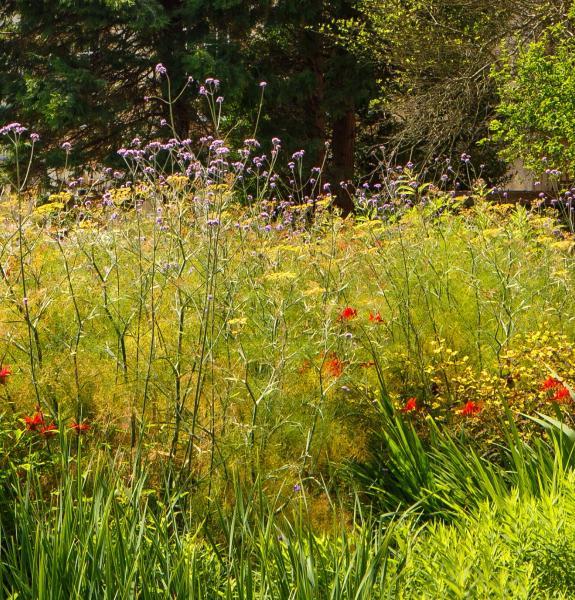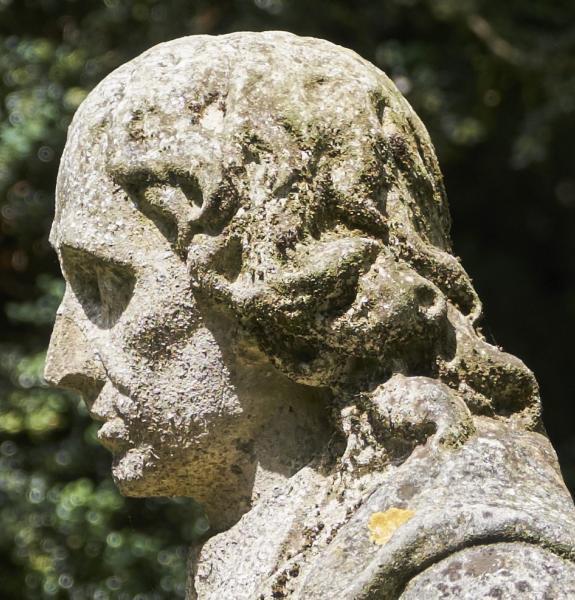If you make your way to the far end of the College Fellows' Garden you will see Milton’s Mulberry Tree. The botanical name is Morus nigra and the fruit from this type of mulberry tree are black mulberries, which come out in spring/summer.
In the 17th century, James I wanted an English industry that would rival the successful silk industries of France and Italy so he asked for 10,000 mulberry trees to be planted. Silk was valuable at the time. Silkworms feed on mulberry leaves, and spin a cocoon of silk threads around themselves before turning into moths, so it was hoped that more Mulberry trees like this would increase the number of silkworms.
T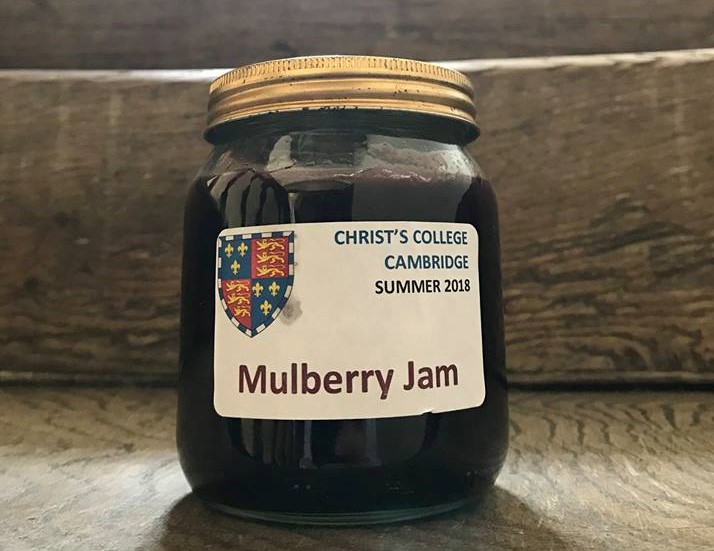 his tree you see in the garden today was grown from the root of an original Mulberry Tree planted in 1609 (the year after English poet John Milton's birth). The tree is large, has a mound at the bottom, and is propped up by wooden posts since it was uprooted in a storm in 1795.
his tree you see in the garden today was grown from the root of an original Mulberry Tree planted in 1609 (the year after English poet John Milton's birth). The tree is large, has a mound at the bottom, and is propped up by wooden posts since it was uprooted in a storm in 1795.
The tree still provides a good crop of mulberries each summer - the College gardeners pick them and take them to the College kitchens, where they are used to make jam. A pot of Christ's Mulberry jam is pictured! Mulberries have a sweet flavour. You don't normally find them in shops.
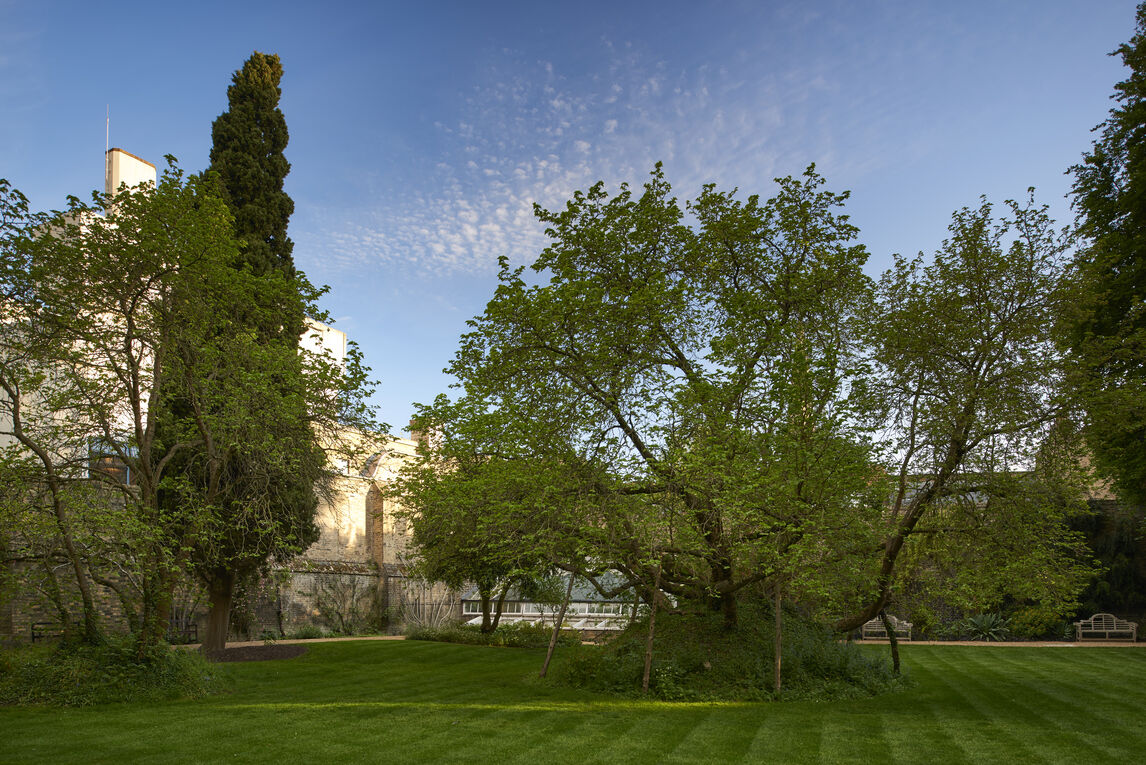 | 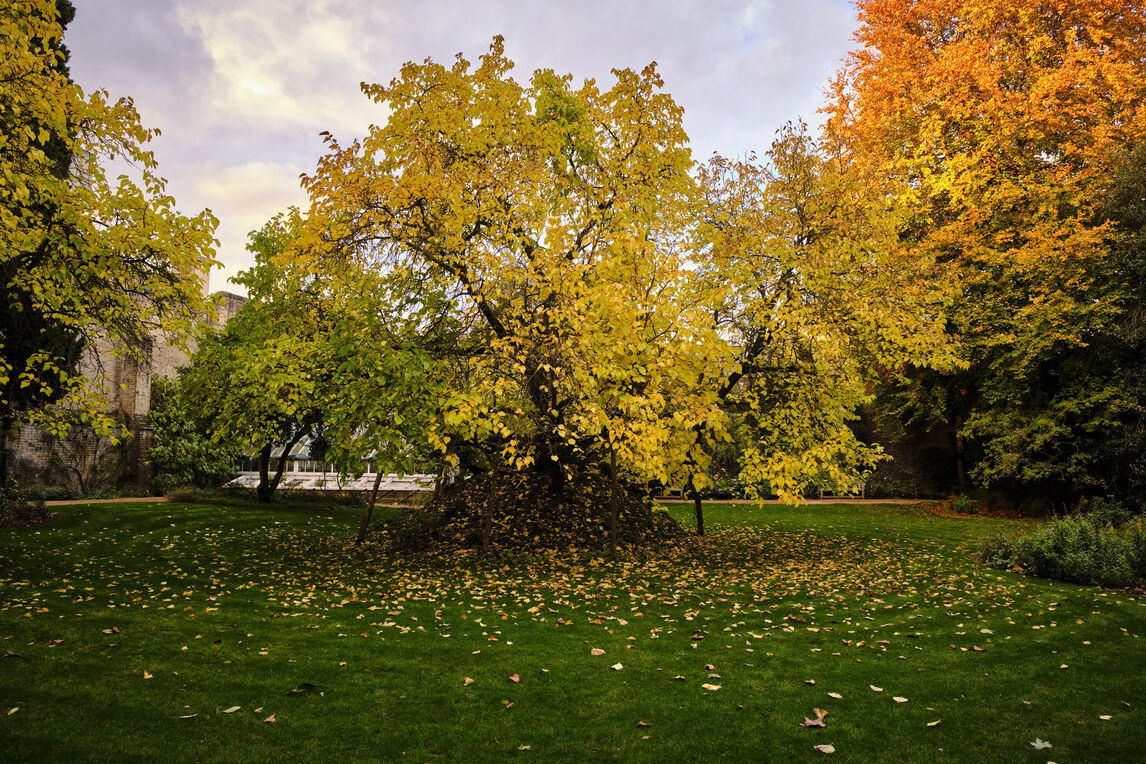 |
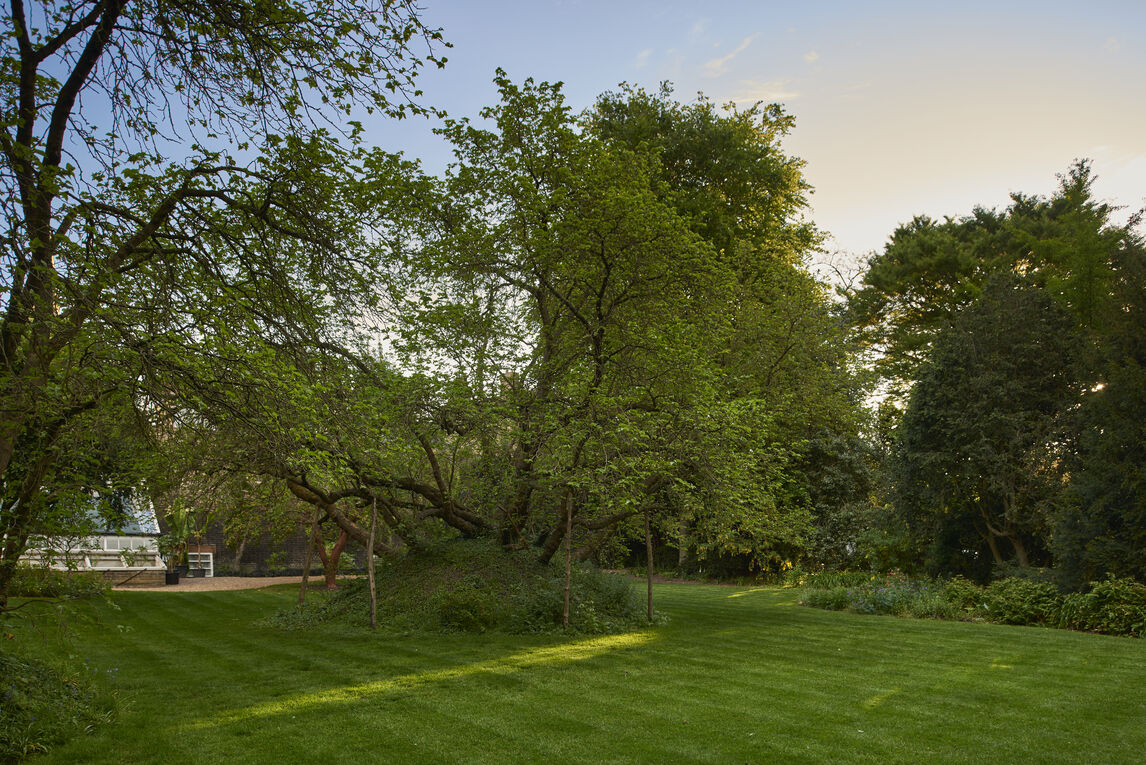 |
Further information
- Peter Coles (2018), The Cambridge Mulberries
- The Milton Mulberry
Visiting Christ's / The Fellows' Garden / Christ's facilities / College map


